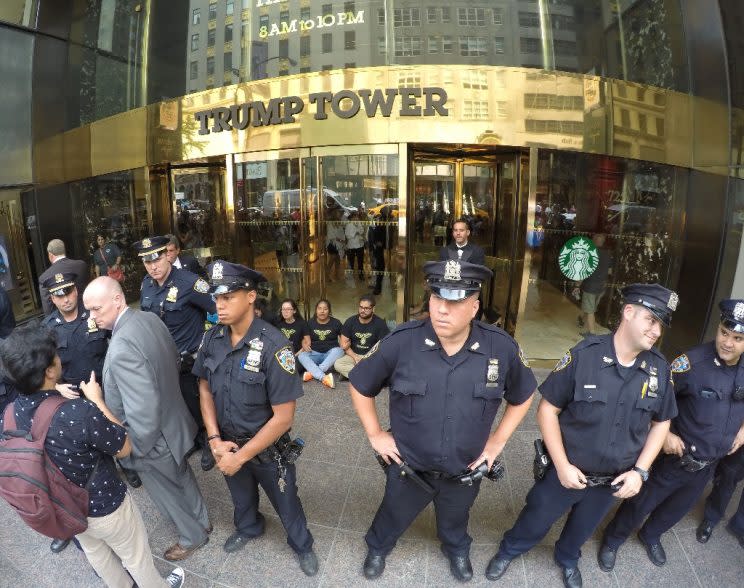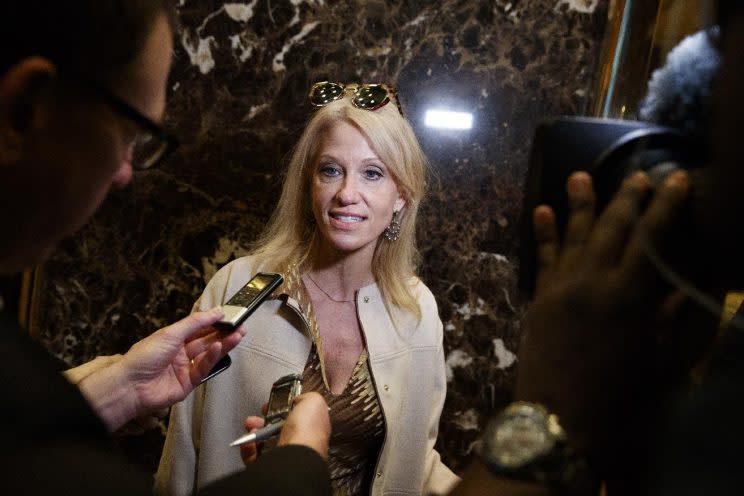Why you should care about Trump ditching his press pool
High above Australia’s endlessly unfurling desert, Vice President Dick Cheney’s Air Force Two was having some technical issues. Lights overhead flickered, and personal reading lights went out. In-flight video refused to work. Power outlets were dead. And no hot meals materialized. To those onboard, including this reporter, it was a very minor inconvenience, chiefly addressed with jokes playing off multiple meanings of “losing power.” To people on the ground, though, it was much more serious than that.
Back in Sydney, Australian Prime Minister John Howard had told the media that he had heard that the vice presidential airplane had suffered some sort of malfunction. “I’m not aware of the full circumstances,” Howard added.
Cheney, whose trip next included unannounced visits to Pakistan and Afghanistan, stopped in Singapore to refuel. The press pool traveling with him deplaned to stretch their legs, make small talk with his aides, and debate what message the vice president was bringing to Islamabad and Kabul.
Things got serious as soon as reporters got cell service: BlackBerry phones (this was late February 2007) buzzed urgently with anxious messages from editors, colleagues, friends, relatives and spouses, alarmed by Howard’s unhelpfully vague comments. Where are you? Are you OK? Where is Cheney? Is the vice president OK? We need to know!
The traveling press corps, at first confused, realized the dramatic, global effects of the prime minister’s words. They quickly filed reports that Cheney was fine, that Air Force Two had suffered minor electrical problems and was in Singapore for a refueling stop. They kept the secret legs of the trip secret, per an agreement designed to minimize security risks, and no one reading their dispatches apparently found Singapore a curious refueling destination for a U.S.-bound flight out of Sydney.
This is the kind of job that falls uniquely to the protective pool following the president or vice president of the United States. It chronicles the unfolding events, large and small, of a presidency, with the belief that writing history shouldn’t be left only to loyal staffers and government officials. It tries to keep the public informed — where the president is, where the president is going, what the president is doing and saying, how the president is doing, with whom the president is meeting. And it’s designed to tell Americans, and the world, about the president’s whereabouts and well-being in the event of a crisis, and how the president is responding. At its grimmest, it’s sometimes called a “body watch,” the bleak legacy of the assassination of JFK and the attempted murder of Ronald Reagan. But the “protective” in protective pool refers to the fact that it follows the president just in case and does not assemble for a specific announcement. (The president always has a protective pool, while the vice president gets one chiefly when traveling abroad.)

The protective pool is not just a megaphone, though the collected outlets — representing newswires, television, radio, photographers and what is still called “print,” even though it’s mostly digital — have vast worldwide reach. The assignment also comes with a duty to question the president and top aides. One of the things that make the United States special is the news media’s ability to do this, on a regular basis, while the president is discharging official functions. This is a recognition of the commander in chief’s unique importance in world affairs, and of the value of relying on an independent news media (with all of its considerable faults) rather than a state-run propaganda apparatus.
In order to do all of this — the news, the history, the potential crisis coverage, the questions — the press pool remains quite close to the president. In practice, this means that there are typically at least two press vans in the presidential motorcade. On domestic and international trips, reporters pay for seats in the very back of Air Force One. When the president is in town, the pool members report to the White House every day, to be their colleagues’ eyes and ears. Reporters typically get pulled into the Oval Office when the president meets with world leaders or the Cabinet. The job takes reporters to the Burger King at Joint Base Andrews for endless hours while President Obama golfs. (The pool rarely glimpses him on those outings, but would be nearby in the event of a crisis.) Poolers can expect long hours in vans outside luxury homes when a president fundraises.
Sometimes, the job can be goofy fun, as was the case on my first pool with Obama, a St. Patrick’s Day outing in 2012. But even then, poolers can feel a nervous sense of duty. It’s hard to forget that the job took reporters to a Florida schoolroom on a sunny mid-September morning 15 years ago for an education-themed event that White House officials had privately described as news-less.
On Tuesday night, President-elect Donald Trump ditched his press pool and went out for a steak dinner. Reporters were mocked for making a big deal of the incident, which did not feature Trump’s traveling far from his Trump Tower headquarters in Manhattan. But it’s unprecedented in modern history for a president-elect not to have a protective pool — though it was also unprecedented for neither nominee to have one coming out of the party conventions. Hillary Clinton paid a price for not having a protective pool when she collapsed and was whisked away on Sept. 11: The sudden, unexplained disappearance of the Democratic nominee for president, like the unspecified technical glitches on Cheney’s plane, generated quite a bit of feverish speculation. (Obama has ditched the pool on a few occasions, prompting strenuous complaints from the White House Correspondents’ Association, which represents the interests of the press corps.)

Trump spokeswoman Hope Hicks has assured the news media that the president-elect’s team is working to arrange a protective pool, after which the news media will get “all of the access that they have ever had under any president.”
That doesn’t mean that reporters would have been in a position on Tuesday to say whether the president-elect likes his steak medium-rare or shout questions that would have annoyed other diners. When the commander in chief goes out for dinner, the pool typically waits (“holds,” in our jargon) in a nearby restaurant or in vans. It’s often accompanied by a Secret Service agent whose job isn’t to protect us but to make sure that no stowaways join the press and slip into the security “bubble” protecting the president.
That “bubble” is a big reason for the pool. Those golf outings are tedious, but in a national emergency, Joint Base Andrews might go on lockdown, making it impossible for reporters to get anywhere near the president for an extended stretch of time. When a president travels overseas to multiple destinations, it would be enormously difficult to get reporters in place at every stop through security on the ground.
And the media is mindful of that security. To be part of the pool on that long-ago Cheney trip, reporters had to agree to tell just one editor that they were going to Pakistan and Afghanistan. But the seriousness of the potential threat really came home when a veteran Secret Service agent, upon hearing inaccurate rumors that someone had reported the vice president’s plans, asked me on approach to Islamabad: “You’re not going to get us all killed, are you?”




